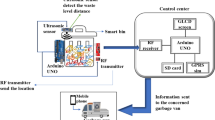Abstract
In delay tolerant networks (DTNs), nodes have intermittent connectivity patterns due to various factors such as mobility, sparse network topology, and unpredictable movement patterns. In such networks, nodes store messages, carry them along as they move and forward them opportunistically whenever an encounter occurs. In many DTN applications, such as in disaster situations and remote regions with no communications infrastructure, we can envisage a network topology formed by the mobility and contact pattern of people carrying their mobile devices. The social behavior of people (nodes) in Spatio-temporal dimensions governs the formation of such a topology. To improve data dissemination in such networks, several works have proposed to utilize social-aware metrics for the selection of relays. However, existing routing protocols for DTNs may perform poorly in the scenarios in which nodes are localized in multiple small regions, and the topology is sparse such as in co-located villages in remote regions with no communication infrastructure. This work proposes a Cooperative mobile throwbox-based routing protocol (CMTR) for social-aware DTNs. In CMTR, static and mobile ThrowBoxes (TBs) are deployed to improve the efficiency of a DTN. The static and mobile TBs cooperatively relay data to enhance network efficiency. Performance evaluation via simulations in ONE simulator shows that CMTR improves the data delivery ratio, delays, and energy efficiency as compared to Epidemic routing and Bubble Rap routing schemes.





Similar content being viewed by others
References
Liu, M., Yang, Y., & Qin, Z. (2011). A survey of routing protocols and simulations in delay-tolerant networks. In Y. Cheng, D. Y. Eun, Z. Qin, M. Song, & K. Xing (Eds.), Wireless algorithms, systems, and applications. WASA 2011 (Vol. 6843). Lecture Notes in Computer Science Berlin, Heidelberg: Springer.
Cao, Y., & Sun, Z. (2013). Routing in delay/disruption tolerant networks: A taxonomy, survey and challenges. IEEE Communications Surveys & Tutorials, 15(2), 654–677.
Burleigh, S., Hooke, A., Torgerson, L., Fall, K., Cerf, V., Durst, B., et al. (2003). Delay-tolerant networking: An approach to interplanetary internet. IEEE Communications Magazine, 41(6), 128–136.
Juang, P., Oki, H., Wang, Y., Martonosi, M., Peh, L. S., & Rubenstein, D. (2002). Energy-efficient computing for wildlife tracking: Design tradeoffs and early experiences with zebranet. ACM Sigplan Notices, 37(10), 96–107.
Zhao, W., Ammar, M., & Zegura, E. (2004). A message ferrying approach for data delivery in sparse mobile ad hoc networks. In Proceedings of the 5th ACM international symposium on Mobile ad hoc networking and computing (pp. 187–198).
Mukherjee, J., & Ramamurthy, B. (2013). Communication technologies and architectures for space network and interplanetary internet. IEEE Communications Surveys & Tutorials, 15(2), 881–897.
Spyropoulos, T., Psounis, K., & Raghavendra, C. S. (2005). Spray and wait: An efficient routing scheme for intermittently connected mobile networks. In Proceedings of the ACM SIGCOMM workshop on delay-tolerant networking (pp. 252–259).
Chuah, M., & Xi, Y. (2007). Enhanced delivery in disruption tolerant networks using advantaged nodes with directional antenna capability. In Military communications conference (pp. 1–6). IEEE.
Hui, P., Crowcroft, J., & Yoneki, E. (2011). Bubble rap: Social-based forwarding in delay-tolerant networks. IEEE Transactions on Mobile Computing, 10(11), 1576–1589.
Pagani, E., Valerio, L., & Rossi, G. P. (2015). Ad hoc networks weak social ties improve content delivery in behavior-aware opportunistic networks. AdHoc Networks, 25, 314–329.
Henmi, K., & Koyama, A. (2013). A DTN routing protocol based on mobility and maximum number of replications. In Seventh international conference on complex, intelligent, and software intensive systems (CISIS) (pp. 293–298). IEEE.
Shobana, F. J. J., & Narayanasamy, R. (2014). Integrated social network reputation inspired routing for effective data forwarding. EURASIP Journal on Wireless Communications and Networking, 2014(1), 1–14.
Haq, A., & Faheem, Y. (2020). A peer-to-peer communication based content distribution protocol for incentive-aware delay tolerant networks. Wireless Networks, 26, 583–601. https://doi.org/10.1007/s11276-019-02167-4.
Wei, K., Liang, X., & Xu, K. (2014). A survey of social-aware routing protocols in delay tolerant networks: Applications, taxonomy and design-related issues. IEEE Communications Surveys Tutorials, 16(1), 556–578. https://doi.org/10.1109/SURV.2013.042313.00103.
Hui, P., & Crowcroft, J. (2007). How small labels create big improvements. In Fifth annual IEEE international conference on pervasive computing and communications workshops (pp. 65–70).
Gao, W., Li, Q., Zhao, B., & Cao, G. (2009). Multicasting in delay tolerant networks: A social network perspective. In Proceedings of the tenth ACM international symposium on Mobile ad hoc networking and computing (pp. 299–308).
Bulut, E., & Szymanski, B. K. (2010). Friendship based routing in delay tolerant mobile social networks. In Global telecommunications conference (pp. 1–5). IEEE.
Zhao, W., Chen, Y., Ammar, M. H., Corner, M. D., Levine, B., & Zegura, E. W. (2006). Capacity enhancement using throw-boxes in mobile delay tolerant networks. In IEEE international conference on mobile adhoc and sensor systems (MASS).
Trullols-Cruces, O., Morillo-Pozo, J., Barcelo-Ordinas, J. M., & Garcia-Vidal, J. (2011). Power saving trade-offs in delay/disruptive tolerant networks. In IEEE international symposium on a world of wireless, mobile and multimedia networks (WoWMoM) (pp. 1–9).
Xiao, M., Wu, J., & Huang, L. (2015). Home-based zero-knowledge multi-copy routing in mobile social networks. IEEE Transactions on Parallel and Distributed Systems, 26(5), 1238–1250.
Cse, D. (2015). A procedure for data discrimination anticipation. International Journal & Magazine of Engineering, 2, 568–571.
Wu, J., Xiao, M., & Huang, L. (2013). Homing spread: Community home-based multi-copy routing in mobile social networks. In Proceedings IEEE INFOCOM (pp. 2319–2327). IEEE.
You, L., Li, J., Wei, C., & Hu, L. (2015). Mpar: A movement pattern-aware optimal routing for social delay tolerant networks. Ad Hoc Networks, 24, 228–249.
Gupta, A. K., Bhattacharya, I., Banerjee, P., Mandal, J. K., & Mukherjee, A. (2016). DirMove: direction of movement based routing in DTN architecture for post-disaster scenario. Wireless Networks, 22, 723–740.
Ying, Z., Zhang, C., & Wang, Y. (2014). Social based throwbox placement in large-scale throwbox-assisted delay tolerant networks. In IEEE international conference on communications (ICC) (pp. 2472–2477). IEEE.
Qirtas, M. M., Faheem, Y., & Rehmani, M. H. (2017). Throwboxes in delay tolerant networks: A survey of placement strategies, buffering capacity, and mobility models. Journal of Network and Computer Applications, 91, 89–103. https://doi.org/10.1016/j.jnca.2017.04.004.
Vahdat, A., Becker, D. (2000). Epidemic routing for partially-connected ad hoc networks. Technical Report, Duke University CS-200006.
Spyropoulos, T., Psounis, K., & Raghavendra, C. S. (2007). Spray and focus: Efficient mobility-assisted routing for heterogeneous and correlated mobility. In Fifth annual IEEE international conference on pervasive computing and communications workshops (pp. 79–85).
Freeman, L. C. (1978). Centrality in social networks conceptual clarification. Social Networks, 1(3), 215–239.
Freeman, L. C. (1977). A set of measures of centrality based on betweenness. Sociometry, 40, 35–41.
Okamoto, K., Chen, W., & Li, X. Y. (2008). Ranking of closeness centrality for large-scale social networks. In Frontiers in algorithmics (pp. 186–195). Springer.
Zhang, Y., & Zhao, J. (2009). Social network analysis on data diffusion in delay tolerant networks. In Proceedings of the tenth ACM international symposium on mobile ad hoc networking and computing (pp. 345–346).
Xiao, M., Wu, J., & Huang, L. (2014). Community-aware opportunistic routing in mobile social networks. IEEE Transactions on Computers, 63(7), 1682–1695.
Wu, H., Fujimoto, R., Guensler, R., & Hunter, M. (2004). MDDV: A mobility-centric data dissemination algorithm for vehicular networks. In Proceedings of the 1st ACM international workshop on vehicular ad hoc networks (pp. 47–56). ACM.
Lochert, C., Mauve, M., Füßler, H., & Hartenstein, H. (2005). Geographic routing in city scenarios. ACM SIGMOBILE Mobile Computing and Communications Review, 9(1), 69–72.
Daly, E. M., & Haahr, M. (2007). Social network analysis for routing in disconnected delay-tolerant manets. In Proceedings of the 8th ACM international symposium on mobile ad hoc networking and computing (pp. 32–40).
Keränen, A., Ott, J., & Kärkkäinen, T. (2009). The one simulator for DTN protocol evaluation. In Proceedings of the 2nd international conference on simulation tools and techniques (p. 55). ICST (Institute for Computer Sciences, Social-Informatics and Telecommunications Engineering).
OpenJump Software. http://www.openjump.org/.
Author information
Authors and Affiliations
Corresponding author
Additional information
Publisher's Note
Springer Nature remains neutral with regard to jurisdictional claims in published maps and institutional affiliations.
Rights and permissions
About this article
Cite this article
Qirtas, M.M., Faheem, Y. & Rehmani, M.H. A cooperative mobile throwbox-based routing protocol for social-aware delay tolerant networks. Wireless Netw 26, 3997–4009 (2020). https://doi.org/10.1007/s11276-020-02288-1
Published:
Issue Date:
DOI: https://doi.org/10.1007/s11276-020-02288-1




